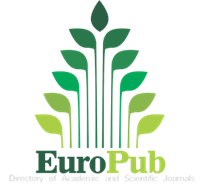Abstract
Background: Mycoplasma hominis and Ureaplasma urealyticum are commonly involved in pathogenesis of bacterial vaginosis and non-specific genital infection, while doing vaginal douching also already known as predisposing factor.
Methods: To evaluate the prevalence of Mycoplasma hominis and Ureaplasma urealyticum infection in female sex workers and its association with vaginal douching, we conducted a study through 180 female sex workers in East Jakarta, Indonesia. Vaginal fluid samples were collected from these women. It was revealed that most of the women used betel soap, baby soap, tooth paste, or herbal medicine as vaginal douching materials. The association of vaginal douching and prevalence of Mycoplasma hominis and Ureaplasma urealyticum was analyzed using cross sectional statistical methods.
Results: There is a high prevalence of Mycoplasma hominis and Ureaplasma urealyticum infection (72%), but there are no association between vaginal douching practice and infection of Mycoplasma hominis and Ureaplasma urealyticum.
Conclusions: The high prevalence of Mycoplasma hominis and Ureaplasma urealyticum infection in female sex workers in East Jakarta warrants a routine screening of these infections. Unusual1 materials used for vaginal douching in this study might cause the negative association between high prevalence of these bacteria with vaginal douching.
References
1. Cedillo-Ramirez L, Gil C, Zago I, Yanez A, Giono S. Association of Mycoplasma hominis and Ureaplasma urealyticum with some indicators of nonspecific vaginitis. Rev Latinoam Microbiol. 2000;42(1):1-6.
2. Pingmin W, Yuepu P, Jiwen Z. Prevalence survey on condom use and infection of urogenital mycoplasmas in female sex workers in China. Contraception. 2005;72(3):217-20.
3. Zdrodowska-Stefanow B, Klosowska WM, Ostaszewska-Puchalska I, Bulhak-Koziol V, Kotowicz B. Ureaplasma urealyticum and Mycoplasma hominis infection in women with urogenital diseases. Adv Med Sci. 2006;51:250-3.
4. Hay P. Recurrent bacterial vaginosis. Curr Infect Dis Rep. 2000;2(6):506-12.
5. Domingues D, Tavora Tavira L, Duarte A, Sanca A, Prieto E, Exposto F. Genital mycoplasmas in women attending a family planning clinic in Guine-Bissau and their susceptibility to antimicrobial agents. Acta Trop. 2003;86(1):19-24.
6. Patel MA, Nyirjesy P. Role of Mycoplasma and Ureaplasma species in female lower genital tract infections. Curr Infect Dis Rep. 2010;12(6):417-22.
7. Casari E, Ferrario A, Morenghi E, Montanelli A. Gardnerella, Trichomonas vaginalis, Candida, Chlamydia trachomatis, Mycoplasma hominis, and Ureaplasma urealyticum in the genital discharge of symptomatic fertile and asymptomatic infertile women. New Microbiol. 2010;33(1):69-76.
8. Clegg A, Passey M, Yoannes M, Michael A. High rates of genital mycoplasma infection in the highlands of Papua New Guinea determined both by culture and by a commercial detection kit. J Clin Microbiol. 1997;35(1):197-200.
9. van der Schee C, Sluiters HJ, van der Meijden WI, van Beek P, Peerbooms P, et al. Host and pathogen interaction during vaginal infection by Trichomonas vaginalis and Mycoplasma hominis or Ureaplasma urealyticum. J Microbiol Methods. 2001;45(1):61-7.
10.Tibaldi C, Cappello N, Latino MA, Masuelli G, Marini S, Benedetto C. Vaginal and endocervical microorganisms in symptomatic and asymptomatic non-pregnant females: Risk factors and rates of occurrence. Clin Microbiol Infect. 2009;15(7):670-9.
11.Peerayeh SN, Sattari M. Detection of Ureaplasma urealyticum and Mycoplasma hominis in endocervical specimens from infertile women by polymerase chain reaction. Middle East Fertil Soc J. 2006;11(2):104-8.
12.Volgmann T, Ohlinger R, Panzig B. Ureaplasma urealyticum-harmless commensal or underestimated enemy of human reproduction? A review. Arch Gynecol Obstet. 2005;273(3):133-9.
13.Liepmann MF, Wattre P, Dewilde A, Papierok G, Delecour M. Detection of antibodies to Ureaplasma urealyticum in pregnant women by enzyme-linked immunosorbent assay using membrane antigen and investigation of the significance of the antibodies. J Clin Microbiol. 1988;26(10):2157-60.
14.Ness RB, Hillier SL, Richter HE, Soper DE, Stamm C, McGregor J, et al. Douching in relation to bacterial vaginosis, lactobacilli, and facultative bacteria in the vagina. Obstet Gynecol. 2002;100(4):765.
15.Djigma F, Ouedraogo C, Sagna T, Ouermi D, Sanogo K, Bisseye C, et al. HIV-infected women of Burkina Faso: A "reservoir" of mycoplasma infection. J Infect Dev Ctries. 2011;5(3):176-81.
16.Holzman C, Leventhal JM, Qiu H, Jones NM, Wang J. Factors linked to bacterial vaginosis in nonpregnant women. Am J Public Health. 2001;91(10):1664-70.
17.Sha BE, Chen HY, Wang QJ, Zariffard MR, Cohen MH, Spear GT. Utility of Amsel criteria, Nugent score, and quantitative PCR for Gardnerella vaginalis, Mycoplasma hominis, and Lactobacillus spp. for diagnosis of bacterial vaginosis in human immunodeficiency virus-infected women. J Clin Microbiol.2005;43(9):4607-12.
18.Modak T, Arora P, Agnes C, Ray R, Goswami S, Ghosh P, et al. Diagnosis of bacterial vaginosis in cases of abnormal vaginal discharge: Comparison of clinical and microbiological criteria. J Infect Dev Ctries. 2011;5(5):353-60.
19.Kementerian Kesehatan Republik Indonesia. Surveilans Terpadu Biologis dan Perilaku 2011.Jakarta: Direktorat Jenderal Pengendalian Penyakit dan Penyehatan Lingkungan;2011.
20.Kementerian Kesehatan Republik Indonesia. Laporan Hasil Penelitian Prevalensi Infeksi Saluran Reproduksi Pada Wanita Penjaja Seks di Jayapura, Papua, Indonesia, 2005: Direktorat Jenderal Pengendalian Penyakit dan Penyehatan Lingkungan;2005.
21.Tevi-Benissan C, Belec L, Levy M, Schneider-Fauveau V, Si Mohamed A, Hallouin MC, et al. In vivo semen-associated pH neutralization of cervicovaginal secretions. Clin Diagn Lab Immunol. 1997;4(3):367-74.
22.Deguchi T, Yasuda M, Yokoi S, Nakano M, Ito S, Ohkusu K, et al. Failure to detect Mycoplasma genitalium in the pharynges of female sex workers in Japan. J Infect Chemother. 2009;15(6):410-3.
23.Newton ER, Piper JM, Shain RN, Perdue ST, Peairs W. Predictors of the vaginal microflora. Am J Obstet Gynecol. 2001;184(5):845-53.
24.Onderdonk AB, Delaney ML, Hinkson PL, DuBois AM. Quantitative and qualitative effects of douche preparations on vaginal microflora. Obstet Gynecol. 1992;80(3 Pt 1):333-8.
25.Monif GR, Thompson JL, Stephens HD, Baer H. Quantitative and qualitative effects of povidone-iodine liquid and gel on the aerobic and anaerobic flora of the female genital tract. Am J Obstet Gynecol. 15 1980;137(4):432-8.
Recommended Citation
Padang, Caroline; Jacoeb, Tjut Nurul Alam; Nilasari, Hanny; and Daili, Sjaiful Fahmi
(2015)
"Prevalence of Mycoplasma hominis and Ureaplasma urealyticum infection in female sex workers and its association with douching: A study in East Jakarta, Indonesia using Mycoplasma System Plus,"
Journal of General - Procedural Dermatology and Venereology Indonesia: Vol. 1:
Iss.
1, Article 1.
DOI: 10.19100/jdvi.v1i1.8
Available at:
https://scholarhub.ui.ac.id/jdvi/vol1/iss1/1






























